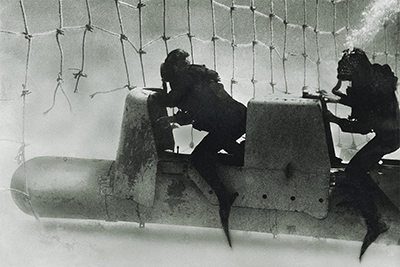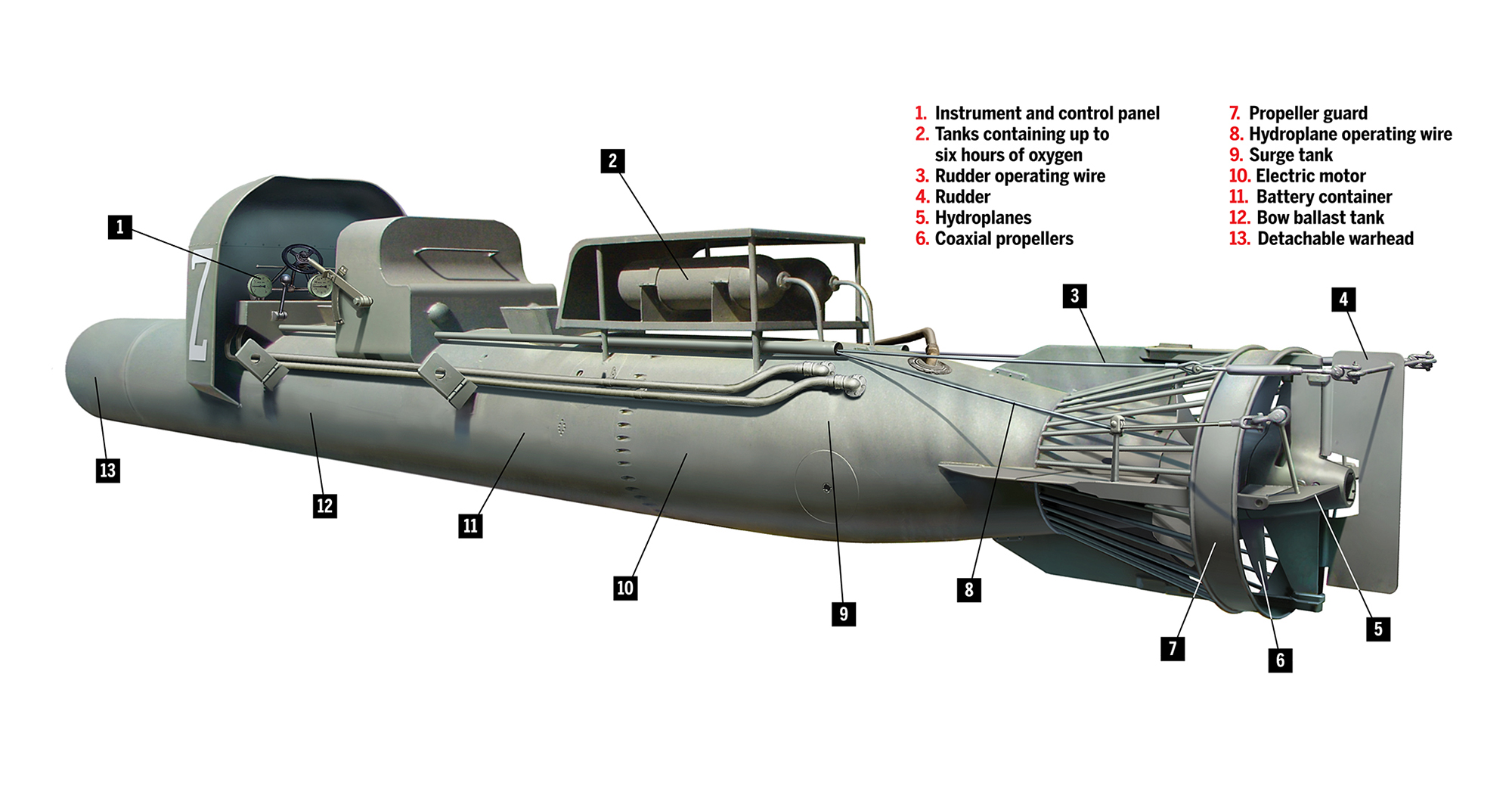Specifications
Engine: 1.6 hp electric motor with self-contained batteries
Length: 22 feet (24 feet with warhead)
Diameter: 21 inches
Combat weight: 1.5 tons
Armament: Two detachable mines totaling 660 pounds of high explosive
Range/Speed: 15 nautical miles at 2.3 knots; 4 nautical miles at 4.5 knots
Crew: Two

The manned torpedo—in essence an underwater minelayer—first saw action with Italy’s Regia Marina on Oct. 31, 1918, when Maj. Raffaele Rosetti and Lt. Raffaele Paolucci rode into the Adriatic port of Pola atop what they called a Mignatta (“leech”) to sink the Austro-Hungarian battleship Viribus Unitis and freighter Wien with detachable limpet mines the next morning. Lacking breathing gear, the raiders carried out their mission with their heads just above water.
In 1935 Captains Teseo Tesei and Elios Toschi, Italian naval engineers, proposed a manned submersible based on the standard torpedo and by year’s end had successfully tested two prototypes at the San Bartolomeo torpedo workshops in La Spezia. Named the Siluro a Lenta Corsa (“slow-running torpedo”), the submersible was better known to crews as the Maiale (“pig”), due to its poor maneuverability. Between 1939 and ’43 the Italian navy manufactured more than 50 SLCs.
Serving in World War II with the 10th MAS Flotilla of armed torpedo boats, the SLCs earned renown on Dec. 19, 1941, when three launched from the submarine Sciré slipped into port at Alexandria, Egypt, and sank the British battleships Valiant and Queen Elizabeth and severely damaged the tanker Sagona and destroyer Jervis. SLCs also operated secretly from the oil tanker Olterra, interned in a neutral Spanish port 2 miles from Gibraltar harbor. Sallying from a hidden underwater hatch, they sank or damaged nine Allied cargo vessels totaling 42,000 tons. Only after Italy capitulated in September 1943 did the Allies discover Olterra’s role.
SLCs sank or damaged a wartime total of three warships and 111,527 tons of merchant shipping. Italy developed an improved version, the SSB (Siluro San Bartolomeo) but fielded only three of them before signing an armistice. MH





